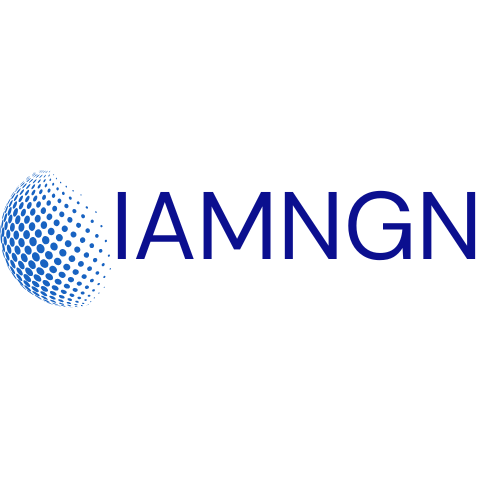Provenance Blockchain: Revolutionizing Transparency and Trust in Today’s Marketplace

In a world where everyone’s trying to sell you the next big thing, how do you know what’s real? Enter provenance blockchain—the superhero of transparency in the digital age. Imagine a world where every product tells its own story, from farm to table, or factory to front door. With provenance blockchain, that dream is becoming a reality, and it’s not just for tech geeks anymore.
Provenance Blockchain
Provenance blockchain technology enhances transparency within supply chains. It enables products to document their entire lifecycle, offering details from origin to consumption. Stakeholders can track critical data points such as production methods, transportation, and storage conditions.
Many industries, including food, fashion, and pharmaceuticals, benefit from it. Adoption in the food industry allows consumers to verify sourcing practices. Fashion brands leverage it for ethical sourcing and sustainability claims. Pharmaceuticals utilize it to prevent counterfeit drugs, ensuring patient safety.
Compliance with regulations becomes easier through provenance blockchain. Companies can streamline audits and inspections, reducing time and costs. They access accurate records in real-time, fostering accountability.
Trust builds between brands and consumers through this technology. Customers prefer products with clear provenance, driving demand for greater transparency. Benefits extend to manufacturers who can differentiate their offerings in a competitive market.
Moreover, data security plays a vital role in this ecosystem. Provenance blockchain secures information with cryptographic techniques, safeguarding against tampering. This level of security reinforces trust and reliability for all participants in the supply chain.
Another significant aspect involves decentralized verification. Each party in the supply chain can independently verify data without relying on a central authority. This openness increases confidence in the recorded information, benefiting end-users.
Overall, provenance blockchain contributes to a more transparent and trustworthy marketplace. It transforms how products are perceived, valued, and consumed within various sectors. Implementing this technology signals a commitment to transparency and accountability.
Key Features of Provenance Blockchain

Provenance blockchain possesses several key features that enhance its functionality and marketability.
Transparency and Traceability
Transparency and traceability form the foundation of provenance blockchain technology. Products can document their entire journey, enabling stakeholders to follow each step from origin to consumption. Consumers in various industries, including food and fashion, gain access to verifiable sourcing practices. This accessibility fosters informed decision-making and builds consumer trust. Each data point recorded provides insight into production methods, transportation, and storage conditions. Brands increasingly leverage these capabilities to demonstrate commitment to ethical sourcing and sustainable practices. When transparency improves, customers prefer products that offer clear and accurate information regarding their provenance.
Security and Immutability
Security and immutability represent critical benefits of using provenance blockchain. Information is secured with cryptographic techniques, significantly reducing susceptibility to tampering. Each entry within the blockchain remains immutable, fostering reliability among supply chain participants. Independent verification becomes simpler as every party can authenticate data without relying on a central authority. This feature enhances confidence in recorded information, especially in industries vulnerable to fraud, such as pharmaceuticals. Effective security measures protect sensitive data and reinforce trust throughout the supply chain. As a result, companies can build stronger relationships with consumers by ensuring data integrity and authenticity.
Applications of Provenance Blockchain
Provenance blockchain offers innovative applications across various industries, enhancing transparency and trust.
Supply Chain Management
Supply chain management benefits significantly from provenance blockchain. This technology enables real-time tracking of products throughout all stages, from raw material sourcing to final delivery. It empowers stakeholders to access critical data, including production processes, storage conditions, and transportation routes. Companies can respond swiftly to issues, such as recalls, ensuring consumer safety. Additionally, streamlined audits and inspections save time and resources, facilitating compliance with industry regulations. As transparency becomes a priority, consumers increasingly trust brands that provide clear product histories, ultimately fostering stronger brand loyalty and differentiation in the marketplace.
Art and Digital Assets
The art world leverages provenance blockchain to establish authenticity and ownership. Artists and collectors can securely document an artwork’s history, including prior owners and exhibition details. This digital ledger protects against forgery and ensures buyers understand the value of their investments. Furthermore, the technology enhances transparency in the sale of digital assets, such as non-fungible tokens (NFTs). Blockchain records the entire transaction history, making it difficult for fraudulent claims to arise. As a result, both artists and collectors benefit from increased confidence and reduced uncertainty in the market, contributing to a thriving ecosystem of creativity and commerce.
Benefits of Using Provenance Blockchain
Provenance blockchain offers significant advantages, particularly in enhancing transparency and trust in various markets. This technology reshapes consumer-brand relationships, fostering informed choices.
Enhanced Trust among Stakeholders
Stakeholders benefit from a proven track record of product histories. Each entry on the blockchain provides undeniable proof of sourcing and production practices. Trust grows as consumers can verify claims directly. Brands that commit to transparency see increased consumer confidence. They establish stronger connections through trust. Enhanced trust also drives customer loyalty, making customers more likely to choose these products repeatedly. Companies gain a competitive edge, attracting consumers seeking honesty in product sourcing. Ultimately, every stakeholder in the supply chain becomes more accountable and transparent.
Reduced Fraud and Counterfeiting
Provenance blockchain serves as a powerful tool against fraud. Each transaction is recorded and secured by cryptographic techniques, making information tamper-proof. This level of security ensures authenticity at every stage. Industries like pharmaceuticals see a decrease in counterfeit items entering the market. With a clear trail of ownership, the risk of forgery diminishes significantly. Brands investing in this technology protect their reputations while assuring consumers of product safety. Enhanced security measures deter fraudulent practices. Consumers feel safer knowing that provenance blockchain safeguards their purchases, contributing to a more secure marketplace.
Challenges and Limitations
Provenance blockchain faces several challenges that impact its widespread adoption and effectiveness. Addressing these issues is crucial for maximizing its potential benefits in various industries.
Scalability Issues
Scalability remains a significant hurdle for provenance blockchain. As the number of transactions increases, maintaining high performance becomes challenging. High volumes of data can lead to slower processing times and increased costs. Networks relying on public blockchain can experience congestion during peak usage, affecting real-time tracking capabilities. Solutions such as layering techniques and sharding are under consideration to improve scalability. These strategies aim to distribute load effectively, allowing faster transactions without compromising security.
Regulatory Concerns
Regulatory concerns also pose challenges for provenance blockchain implementation. Variation in regulations across different jurisdictions can complicate compliance for businesses. Companies must navigate a complex landscape of industry standards and data protection laws. Blockchain technology often requires traceability of personal data, influencing privacy regulations adherence. Industry stakeholders must engage with regulators to create frameworks that facilitate innovation while ensuring consumer protection. Collaboration with government agencies can foster clearer guidelines, enabling smoother adoption of provenance blockchain solutions.
Conclusion
Provenance blockchain stands at the forefront of transforming marketplace transparency. By documenting every step of a product’s journey, it empowers consumers to make informed choices and fosters trust between brands and their audiences. As various industries embrace this technology, the demand for transparency continues to rise, pushing manufacturers to adapt and innovate.
Despite challenges like scalability and regulatory complexities, the potential benefits of provenance blockchain are undeniable. It enhances security and accountability while combating fraud, particularly in sensitive sectors like pharmaceuticals. As stakeholders navigate these hurdles, the commitment to transparency will likely drive further adoption, reshaping consumer-brand relationships and creating a more trustworthy marketplace.




